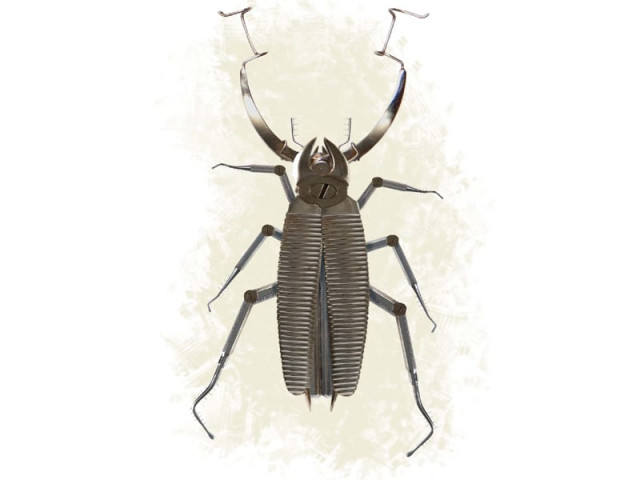Coming to a pharmacy near you?: Don’t get bugged, get better — with the help of a cockroach
Toxins in cockroach brains prove potent against bacterial infections.

If you were dying of an infection and someone told you there was a cure, chances are you wouldn’t say no to taking the medicine. But what if the cure was an antibiotic made from a cockroach’s brain?
Yuck factor aside, Dr Naveed Ahmed Khan of the Aga Khan University Khan’s department of Biological and Biomedical Sciences wants us to suspend our disgust for a moment and consider his point of view. He grew curious about the bugs while working in Nottingham, UK three years ago. These organisms live in the filthiest places known to man, yet they continue to thrive — even in the presence of superbugs. They are so resilient that even if you cut off a cockroach’s head, it will continue to survive for a week. “It certainly warranted a study,” Khan told The Express Tribune. “I want to people to ... start seeing them as a rich resource for antibiotics.”
Much to his delight, preliminary tests concluded that the tissues of the brain and nervous system of the insects were able to kill more than 90 per cent of Methicillin-resistant Staphylococcus aureus and pathogenic Escherichia coli, without harming human cells.
So far, nine molecules from the roach’s brain have been identified and synthesised. The toxic finding proved potent against both gram negative (neuropathogenic E coli) and gram positive bacteria.
Need for urgent action
But you argue that there are plenty of other options in the market — you don’t need to necessarily rely on cockroaches for antibiotics. Well, not just yet, perhaps. Our options are running out.
Vancomycin is the only real antibiotic left. With one vial costing about £200, it is not a cheap solution. In the last two years, only two new antibiotics have been approved in the United States Food and Drug Administration. Even they are not really new, but old antibiotics with a slightly different and advanced structure. We are also growing more and more resistant to these drugs.
“When people complain of fake antibiotics as they do not work as well or as quickly, I tell them the antibiotics are not fakes, they just are not as potent and able to combat the growingly clever and resistant pathogens,” said Khan. “Regular pathogens can be dealt with [but] the real emphasis [should be on] tackling this growing threat of superbugs.”
The roach antibiotic has the capability to treat bacterial infections such as diarrhoea, pneumonia, sepsis, tetanus, measles, and meningitis. Tests for TB have not been conducted yet but it is on the list.
It is estimated that of the half a million Pakistani children who die annually, 70 per cent of the deaths are from infections (bacteria and viruses). About 95 per cent of people suffering from infectious diseases are battling bacterial infections.
Roadblocks
While the scientist has the theory, technique and preliminary findings sorted out, he hits a major roadblock when it comes to financing clinical trials. “We are ready to start today, we just need the green signal for funds,” he says. The federal and provincial ministries of health, the Infection Control Society of Pakistan do not seem interested.
When Khan was in Nottingham, he also did some work for the United Kingdom’s ministry of defence. Those links are now his plan B should the Pakistani government not wish to help.
“The United States, the UK and India are all interested in the study but Pakistan doesn’t seem to care much,” he said. “They keep saying we already have too much on our plate and can’t give too much focus to the future. Eventually if we do not get any local support we will no choice but to allow the British and the Americans in.”
ICSP president Rafiq Khanani told The Express Tribune, however, that they would be “definitely” interested in this research. He claims to not have been contacted by Khan. Neither did Sindh Health Secretary Syed Hashim Raza Zaidi. Federal Minister for Health Riaz H Pirzada was unavailable for comment. Trials could cost about $5 million but this is still a rough estimate.
If all goes well, the product could be on the shelves between the next five to 10 years. “We hope to make the drug available in the price range of a few hundred rupees,” said Khan. “The Indian government gives a great deal of subsidies on some medicines.”
Published in The Express Tribune, June 18th, 2011.



















COMMENTS
Comments are moderated and generally will be posted if they are on-topic and not abusive.
For more information, please see our Comments FAQ